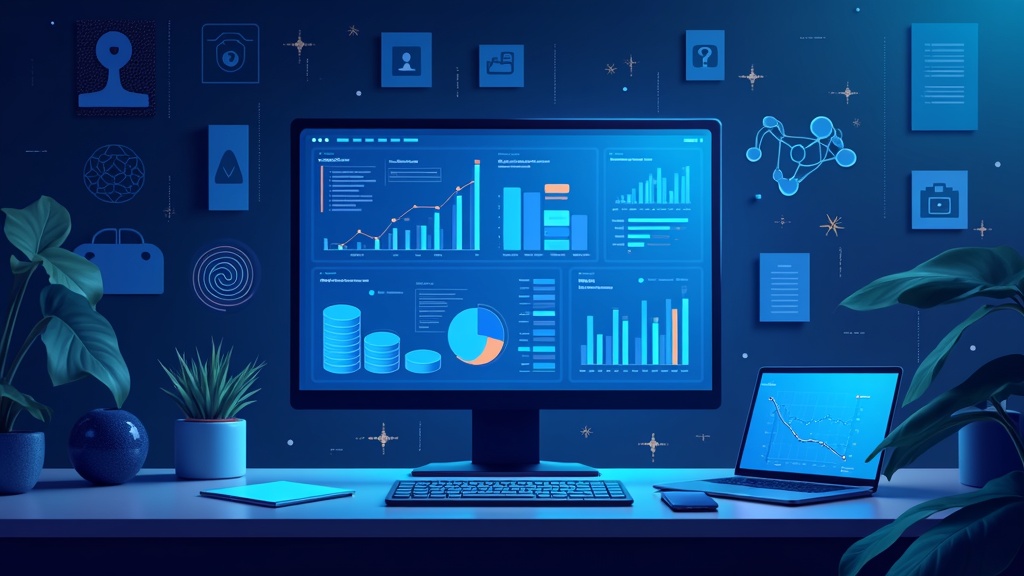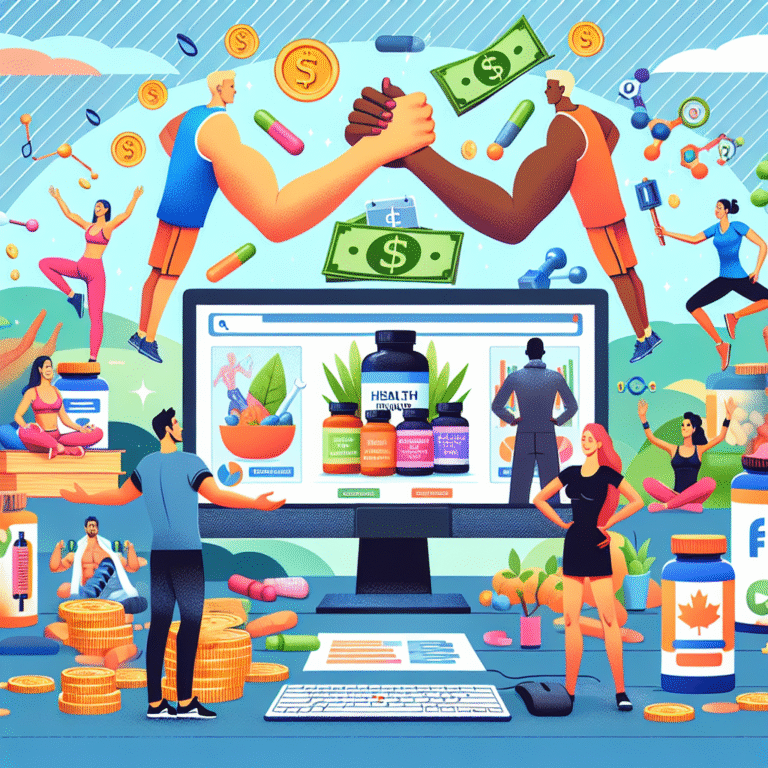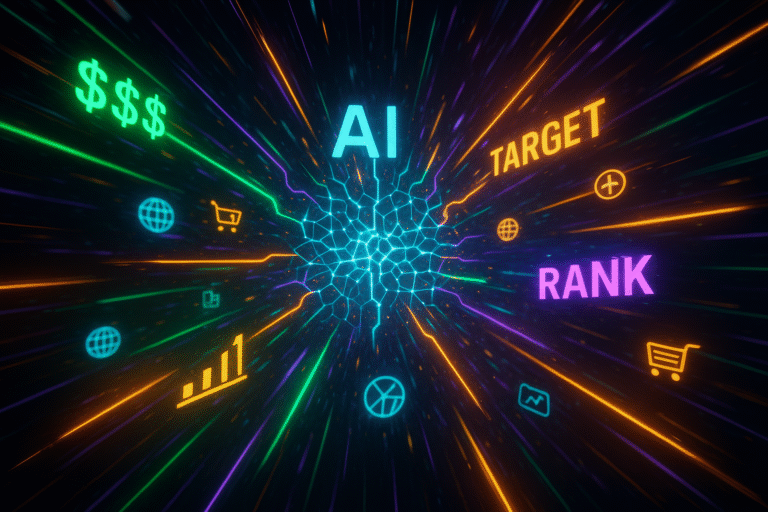 AI has completely changed my affiliate marketing game over the past few years. I used to spend long hours on routine tasks and guesswork. Now, with AI tools, I create better content, target the right audiences more accurately, and track results in ways that just weren’t possible before. This guide shares what I’ve learned from real case studies and my own experience with AI-powered affiliate marketing. I break down the strategies, tools, and lessons that have helped affiliates see better performance and higher commissions. My aim here is to help you see how AI can work for your affiliate business, whether you’re just starting out or ready to scale up.
AI has completely changed my affiliate marketing game over the past few years. I used to spend long hours on routine tasks and guesswork. Now, with AI tools, I create better content, target the right audiences more accurately, and track results in ways that just weren’t possible before. This guide shares what I’ve learned from real case studies and my own experience with AI-powered affiliate marketing. I break down the strategies, tools, and lessons that have helped affiliates see better performance and higher commissions. My aim here is to help you see how AI can work for your affiliate business, whether you’re just starting out or ready to scale up.
Affiliate marketers face a crowded marketplace, changing algorithms, and rising customer expectations—just like I do. Adopting AI has helped me automate boring tasks, tailor content and offers, and make smarter, faster decisions. If you’re curious about how AI makes an impact, these success stories and methods will give you a clear look at what’s working right now.
Introduction
Affiliate marketing is always growing, but it’s also more competitive than ever. AI technology brings new opportunities for anyone who wants to get ahead. In my experience, the people and brands who make the most of AIdriven automation, personalization, and analytics tend to stand out.
Why AI is a Game-Changer in Affiliate Marketing
What makes AI so valuable for affiliate marketers is its ability to process huge amounts of data quickly and accurately. For me, that means I can spot trends, target the right audiences, and quickly adapt my strategies. AI also helps by creating content at scale, customizing messaging, and adjusting campaigns in real time, all with less manual effort than before. It’s always working in the background, giving me more time to plan and experiment.
How AI is Transforming Affiliate Marketing
AI is changing every part of how I approach affiliate marketing, from initial research and workflow setup to conversion tracking and optimization. Here are a few ways AI keeps making it easier and more effective.
Automation and Workflow Optimization
One of the first things I noticed after using AI tools was how much time I saved. Platforms like CustomGPT.ai and Partnero handle repetitive tasks like updating links, managing commissions, and reporting performance. This automation is really important for freeing up my schedule. For example, I let AI sort and segment affiliate partners, track sales in real time, and even schedule follow-up emails automatically. That way, I can focus more on strategy, creative content, and relationships.
Personalization and Customer Segmentation
Personalization used to mean relying on a few basic demographics. Now, with the help of machine learning, I can segment my audience much more granularly. AI tools analyze browsing habits, previous purchases, and engagement history. With that insight, I can deliver highly relevant offers, emails, and ads. Campaigns that feel personalized perform much better, usually boosting open rates and conversions. This level of targeting would be almost impossible to manage manually at scale.
Predictive Analytics and Data-Driven Decisions
AI-powered analytics go beyond tracking basic metrics. Predictive tools help me spot patterns and trends, before they become obvious. For example, AI models can forecast which products are likely to become bestsellers, predict when a customer might drop off, or estimate which affiliate channels will bring in the most revenue next quarter. Making data-driven decisions takes out a lot of the guesswork, and I’ve seen a clear improvement in ROI and speed to profit as a result.
Case Studies: Real-World Success Stories
Nothing demonstrates the value of AI like actual results. These case studies show how various companies and solo affiliates have applied AI to boost their affiliate marketing results.
CustomGPT.ai: Leveraging Video and Generative AI for Affiliate Growth
CustomGPT.ai is an advanced platform that blends AIpowered video generation with affiliate management. One of their clients, an elearning company, wanted to create hundreds of product review videos for their affiliate network. The old way involved a ton of manual editing and copywriting. By switching to CustomGPT.ai, they used AI to instantly generate personalized scripts and video content for each affiliate’s audience segment. According to the company’s report, this approach doubled video production speed and increased affiliate sales by 30%. Conversion rates improved because the content was more engaging and tailored to viewers’ interests.
I started experimenting with generative AI for content like this after seeing examples from CustomGPT.ai. The difference is not just speed but also the ability to test many angles and formats with very little extra effort, which leads to betterperforming affiliate campaigns across different platforms.
Optmyzr: Simplifying Affiliate Content Creation with AI
Optmyzr focuses on using AI to improve digital advertising and content strategy. One affiliate publisher used their platform to automatically generate ad copy and landing page content for different products. Instead of writing by hand, the affiliate set up prompts and brand guidelines. The AI generated tailored content variations for each audience segment, and the publisher then AB tested headlines, images, and callstoaction.
This resulted in a steady 25% improvement in clickthrough rates across their affiliate campaigns. The ability to scale highquality, targeted content means the publisher could branch into new verticals far faster than before. When I adopted similar automation with my own campaigns, I noticed an immediate change, not only in content quality but also in how quickly I could complete campaigns for new affiliate partners.
Oak Furniture Superstore: Data-Driven Expansion and Dynamic Commissions
Oak Furniture Superstore uses AI to optimize its affiliate program management. Traditionally, they managed fixed commission rates across all categories. With AI, they switched to dynamic commission structures that adjust in real time, based on things like product margins, website traffic, and average order value. They also used predictive models to pick the best performing affiliate partners to prioritize with custom deals and bonuses.
The result was a big jump in both average order value and total affiliate revenue. Reports shared by the company highlight a 20% revenue increase over the previous year and improvements in partner satisfaction. Dynamic commission offers meant affiliates pushed the products with higher profitability, while predictive analytics helped focus spending where it got the best results. I found this data-driven approach helped me spot opportunities and optimize campaigns that would have otherwise slipped through the cracks.
GreenLifeStyle: Overcoming Challenges with AI-Powered Insights
GreenLifeStyle, a midsized health and wellness affiliate, struggled with unpredictable campaign results and falling engagement. By adopting AI tools that offered deeper analytics, they were able to pinpoint why some campaigns performed better than others. The AI tracked user behavior, content engagement, and even sentiment in online comments to refine message targeting and product selection. Over six months, GreenLifeStyle saw a 15% increase in conversion rates and grew recurring affiliate commissions by 35%. Their key takeaway was that AI made it easier to quickly identify underperforming areas and experiment with new, evidence-based campaign tweaks, which matched my own experience.
Key Strategies and Tools Used
AIdriven affiliate marketing isn’t just about using one flashy tool. Successful affiliates combine several strategies and platforms to get the best results. Here are a few approaches and technologies I rely on, backed by these realworld case studies.
AI-Powered Content Generation
Tools like CustomGPT.ai, Jasper, and Copy.ai automate the process of writing blogs, product reviews, email sequences, and ad copy. AI analyzes highperforming keywords, competitor content, and engagement rates, then crafts unique content optimized for SEO and conversions. I’ve been able to scale content output, maintain consistent branding, and experiment with style or tone much more easily. It’s important to review and edit generated content to keep it natural and trustworthy, but it’s a huge time saver compared to writing everything manually.
Dynamic Ad Creation and Placement
Platforms with AIdriven ad managers (like Optmyzr) use machine learning to build and test multiple ad variations on search and social media. These tools look for which combinations of headlines, images, and descriptions perform best with each segment. I use these insights to fine tune my campaigns and switch budget toward top performers. The dynamic placement feature adjusts bids automatically, helping me get the most from my ad spend, especially when promoting timesensitive affiliate offers.
Chatbots and Conversational AI for Lead Generation
Adding AI chatbots to landing pages or product reviews is a strategy I tested after seeing its success in a few case studies. Chatbots and virtual assistants answer questions, suggest relevant products, or guide users through signup processes. This not only increases user engagement but also captures more qualified leads. Customizable chatbots let me greet users by name, recommend specific products, and collect feedback, all without needing manual intervention every time.
Performance Tracking and Optimization
AIdriven tracking platforms collect and analyze data on every click, conversion, and purchase. I use these platforms to monitor which channels and creatives drive the most performance, then adjust budgets and messaging accordingly. Predictive analytics highlight trends before they become obvious, so I can test new ideas or switch up strategy sooner. Automated alerts notify me if a campaign underperforms, allowing for faster correction.
Lessons Learned and Best Practices
Switching to AIdriven affiliate marketing has brought me a mix of big wins and teachable moments. These practical lessons come directly from case studies and my own handson experience.
Common Pitfalls and How to Avoid Them
- Relying only on automation: AI tools make things easier, but they need regular human review. Double check automated content, check data accuracy, and ensure campaigns stay brand appropriate.
- Ignoring privacy or data protection: Audience targeting is powerful, but you need to follow regulations and respect user privacy. Use reputable tools and be transparent with users about how you collect data.
- Overtargeting or spamming: Personalization works great, but bombarding people with too many offers or retargeted ads can backfire. Quality and timing matter more than quantity.
- Lack of clear goals: AI tools help most when you set specific targets (such as clickthrough rate increases or revenue growth) and measure them carefully.
Maximizing ROI with AI
- Test often and act quickly: AI can help you identify opportunities and test new creative or channel ideas rapidly. Keep a flexible mindset and iterate often for better results.
- Combine multiple data sources: Mix together AIdriven analytics with feedback from email, social media, and customer surveys for a fuller understanding of what works.
- Educate yourself on the tools: Each AI platform works differently. Invest time in learning the setup, best practices, and data interpretation features for every new tool.
- Build relationships: Even with great automation, human connections with affiliate partners, advertisers, and users remain really important for longterm growth.
Future Trends: What’s Next for AI in Affiliate Marketing?
The pace of AI progress shows no sign of slowing down. In the next couple of years, I expect a few changes to shape how affiliates work and grow:
- Wider adoption of dynamic commission systems powered by AI, which adjust incentives faster to keep top partners engaged.
- More advanced AI-powered personalization, where each visitor sees entirely unique content, offers, and images tailored to their preferences and real time behavior.
- Growth of voice and conversational AI. Smart speakers and personal assistants will start to play a bigger role in affiliate discovery and sales.
- Better integration between AI tools, from content creation to performance tracking to seamless payment processing, making affiliate management easier and more unified.
- There will also be more transparency about AI decision-making and data collection, with companies sharing how and why they use certain AI recommendations or automations.
Staying alert to these trends helps me stay ahead, experiment early, and offer better value to both affiliate programs and end users.
Frequently Asked Questions
How is AI transforming affiliate marketing right now?
AI helps affiliate marketers work faster, target customers more accurately, create content automatically, and get more detailed performance insights. These improvements lead to higher revenue, lower costs, and more effective campaigns.
What are real-world examples of successful AI-powered affiliate campaigns?
Case studies from brands like CustomGPT.ai, Optmyzr, Oak Furniture Superstore, and GreenLifeStyle show big improvements in conversion rates, faster campaign setup, and better partner satisfaction. These brands used AI for everything from generating custom video content to setting dynamic commissions and analyzing customer data for better targeting.
Which AI tools are most useful for affiliate marketers?
Some of the most effective tools I use are CustomGPT.ai (for content and video), Optmyzr (for ad and content automation), Partnero (for affiliate management), Jasper and Copy.ai (for AI writing), and predictive analytics platforms for campaign optimization.
How does AI improve targeting and personalization for affiliates?
AI analyzes user behavior and engagement to segment customers and serve up the most relevant offers. Personalization boosts engagement and conversion because people are seeing content and deals that actually match what they need or want.
How does AI help with dynamic commission structures?
AI dynamically adjusts commission rates in response to market data, seasonality, and partner performance. This helps keep affiliates motivated and makes sure highperforming products or partners get extra focus when possible.
What should I watch out for when implementing AI in affiliate marketing?
Common risks include relying too heavily on automation without oversight, not protecting customer data well enough, and failing to set up clear campaign goals. Regular monitoring, transparent data policies, and mixing human review with AI output solve most issues.
Conclusion: Actionable Takeaways for Affiliate Marketers
AI is now one of my most important tools for running profitable, flexible, and data-driven affiliate marketing campaigns. After using AI to increase my output, improve targeting, and track results more closely, I’ve seen big improvements in both revenue and time management.
Your Action Steps:
- Pick one AIpowered tool to test for content generation or campaign automation this week.
- Set measurable goals, like boosting conversion rates or reducing wasted ad spend, and track progress closely with real time analytics.
- Review your data regularly to find what works, then scale up winning tactics and retire weak ones quickly.
If you’re already using AI, keep testing new uses and platforms. If you’re just getting started, focus on one area, like content automation or performance analytics, to build confidence. The right mix of AI and human knowhow can make affiliate marketing more rewarding and less stressful for you and your partners.






